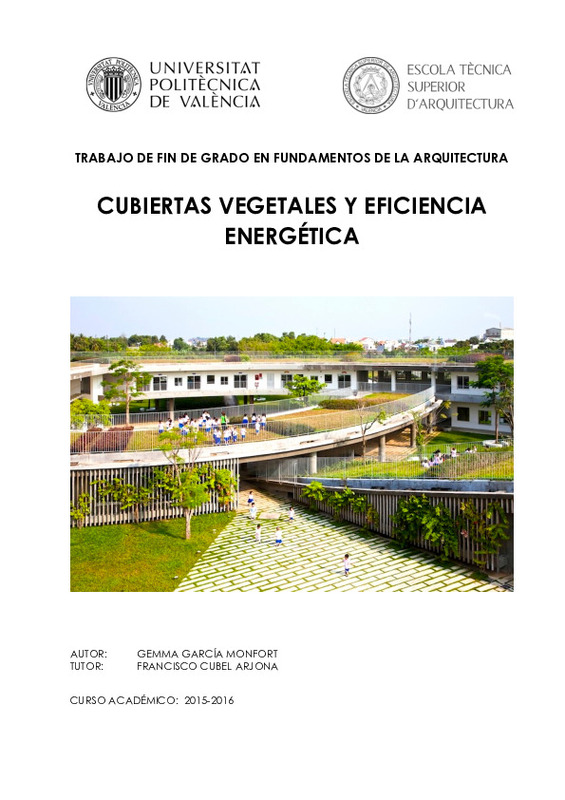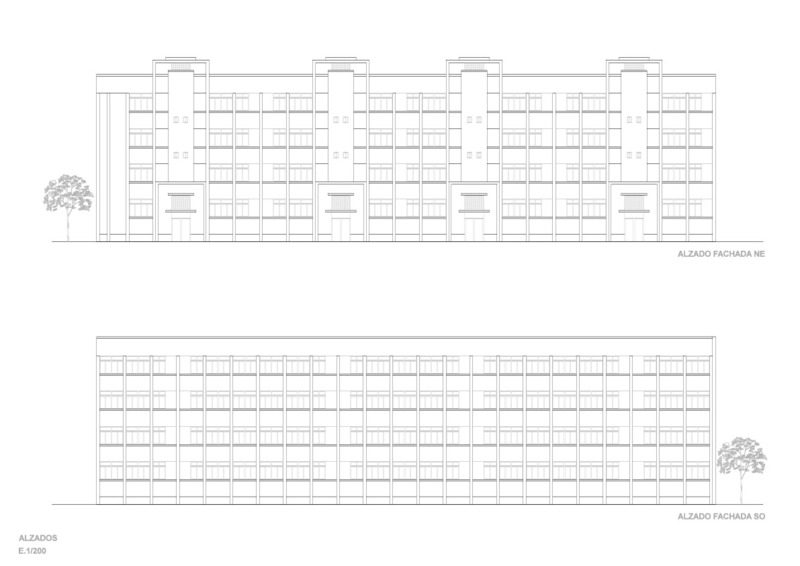JavaScript is disabled for your browser. Some features of this site may not work without it.
Buscar en RiuNet
Listar
Mi cuenta
Estadísticas
Ayuda RiuNet
Admin. UPV
Cubiertas vegetales y eficiencia energética
Mostrar el registro sencillo del ítem
Ficheros en el ítem
| dc.contributor.advisor | Cubel Arjona, Francisco José
|
es_ES |
| dc.contributor.author | García Monfort, Gemma
|
es_ES |
| dc.date.accessioned | 2017-12-15T13:11:39Z | |
| dc.date.available | 2017-12-15T13:11:39Z | |
| dc.date.created | 2016-09-14 | |
| dc.date.issued | 2017-12-15 | es_ES |
| dc.identifier.uri | http://hdl.handle.net/10251/92905 | |
| dc.description.abstract | Green roofs, in spite of they have been used since antiquity, their sustainability and climate change improvements put them in the spotlight. In this study, we chose a dwelling built in the fifties, located in the city of Valencia, and explored how the construction of a green roof is improving substantially the energy efficiency; estimating that by means of CE3X model. The installation of a green roof in a constructively highly deficient dwelling, allow to move building¿s energetic efficiency classification value from G to E. This effect boosts as dwellings are in direct contact with the green roof. Besides, the return period for the investment has been estimated in 11 years. Finally, a lot of city-scale benefits are not being considered in the present study due to the excessive length it would reach. | es_ES |
| dc.description.abstract | La cubierta vegetal, pese a que se ha venido utilizando desde la antigüedad, presenta en la actualidad un especial interés en pos de la consecución de los objetivos de sostenibilidad y lucha contra el cambio climático. Partiendo de una vivienda base de los años 50 situada en la ciudad de Valencia, se observa que la instalación de una cubierta vegetal mejora sustancialmente la eficiencia energética; calculando ésta mediante el modelo CE3X. La instalación de una cubierta ajardinada en una vivienda muy deficiente constructivamente permite mejorar su calificación energética de G a E. Éste efecto se observa más claramente en las viviendas en contacto directo con la cubierta vegetada. Además, se ha estimado que el periodo de amortización de la inversión es de aproximadamente 11 años. Por último, destacar que existen una serie de beneficios a escala de ciudad, no considerados en el presente estudio. | es_ES |
| dc.format.extent | 53 | es_ES |
| dc.language | Español | es_ES |
| dc.publisher | Universitat Politècnica de València | es_ES |
| dc.rights | Reserva de todos los derechos | es_ES |
| dc.subject | Arquitectura biosostenible | es_ES |
| dc.subject | Eficiencia energética | es_ES |
| dc.subject | Sostenibilidad | es_ES |
| dc.subject | Cubiertas vegetales | es_ES |
| dc.subject | Green buildings | es_ES |
| dc.subject | Energy efficiency | es_ES |
| dc.subject | Sustainability | es_ES |
| dc.subject | Green roofs | es_ES |
| dc.subject.classification | CONSTRUCCIONES ARQUITECTONICAS | es_ES |
| dc.subject.other | Grado en Fundamentos de la Arquitectura-Grau en Fonaments de l'Arquitectura | es_ES |
| dc.title | Cubiertas vegetales y eficiencia energética | es_ES |
| dc.type | Proyecto/Trabajo fin de carrera/grado | es_ES |
| dc.rights.accessRights | Abierto | es_ES |
| dc.description.bibliographicCitation | García Monfort, G. (2016). Cubiertas vegetales y eficiencia energética. http://hdl.handle.net/10251/92905 | es_ES |
| dc.description.accrualMethod | TFGM | es_ES |
| dc.relation.pasarela | TFGM\38014 | es_ES |
Este ítem aparece en la(s) siguiente(s) colección(ones)
-
ETSA - Trabajos académicos [4687]
Escuela Técnica Superior de Arquitectura







